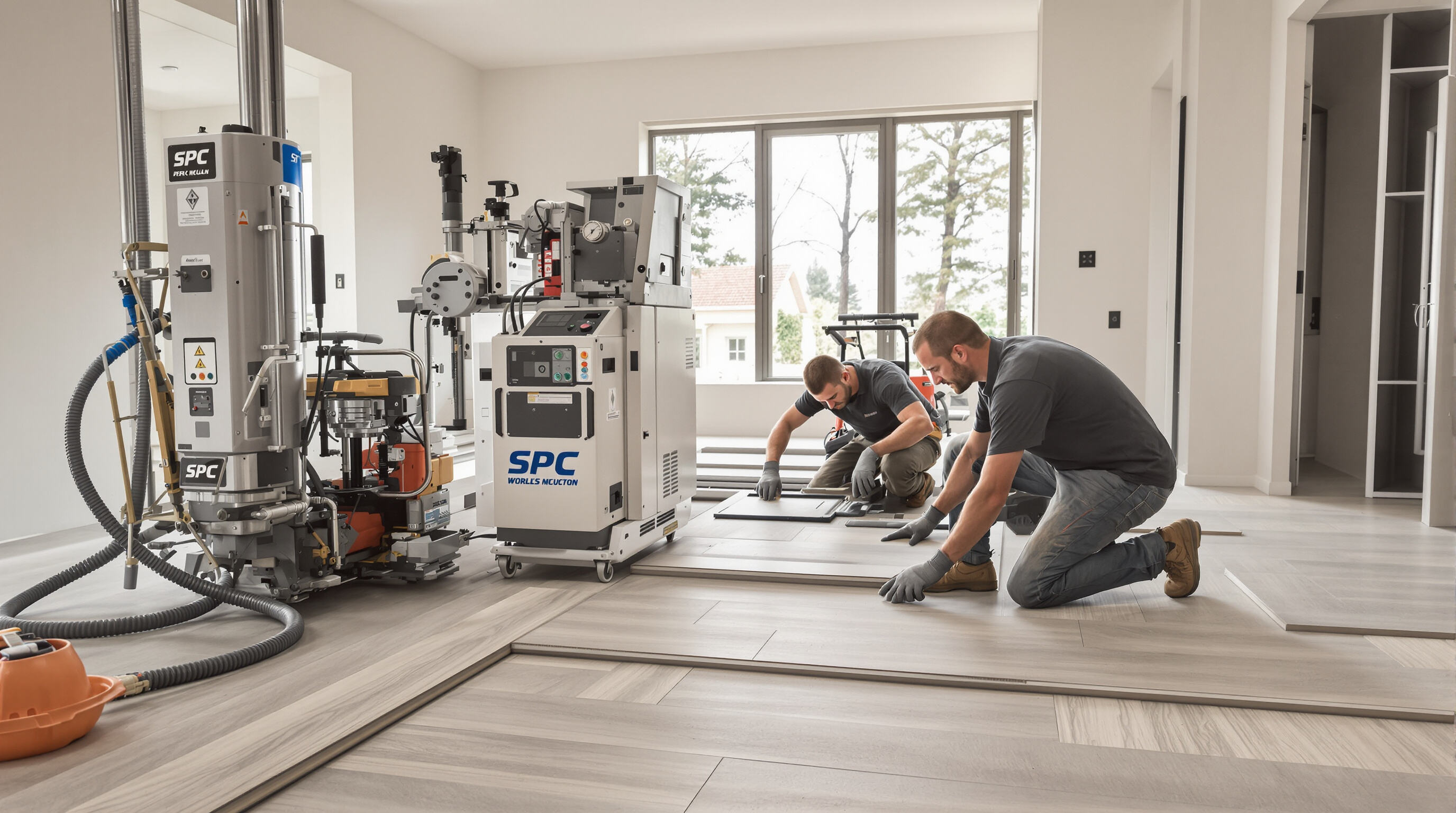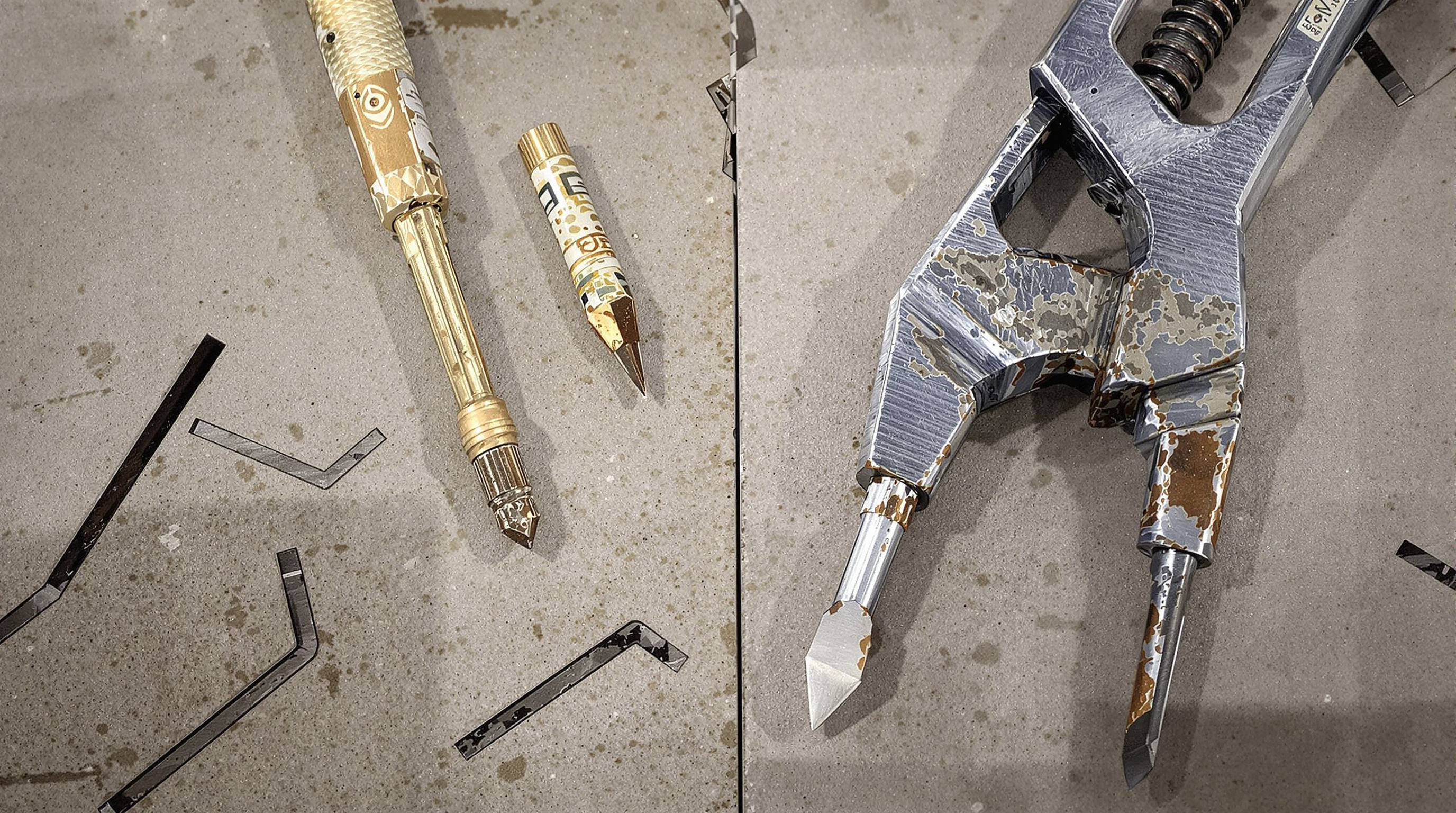What Is an SPC Floor Machine and How Does It Support Modern Flooring Installation?
Defining SPC Floor Machines in the Context of Rigid Core Vinyl Flooring
SPC floor machines are basically built for one job only: laying down Stone Plastic Composite (SPC) rigid core vinyl flooring. Standard flooring gear just doesn't cut it here because SPC is much denser than WPC products, roughly double the density actually. That's why these special machines come equipped with cutting systems that avoid those annoying chips and cracks along the edges. Most modern models use industrial CNC tech to stay within about half a millimeter when adjusting planks, which makes all the difference when trying to get those tight, invisible seams between boards that look so good in commercial spaces. The precision isn't just about looks either. It saves money on wasted materials and lets installers tackle complicated floor plans while still getting uniform results across the board.
Key Features of SPC Flooring That Influence Machine Design and Functionality
The unique properties of SPC flooring directly shape the design of its installation tools:
- Impact resistance (4–5 times greater than standard vinyl) requires reinforced blades to avoid micro-fractures during cutting
- Thermal stability demands tension-adjustable systems in click-lock tools to manage expansion gaps
-
Waterproof cores eliminate the need for adhesives, shifting focus to mechanical locking mechanisms
To protect the wear layer–where 78% of installation damage occurs (Flooring Tech Review 2023)–SPC machines include pressure-sensitive depth controls. Additionally, extrusion calibration grooves in pull bars adapt to SPC’s variable thickness (3.5–8mm), ensuring uniform joint engagement without warping planks.
Compatibility Between Click-Lock Installation Systems and SPC-Specific Tools
Today's SPC flooring machines come equipped with specially shaped guides that fit right into those click lock profiles, making it possible to connect the tongue and groove sections securely without needing those heavy impact tools that tend to mess up the locking edges. The installation arms are angled at around 25 to 35 degrees, which happens to be just about right for getting those locks engaged properly and avoiding that annoying lip problem people get when they hammer down on rigid core planks. There are also vacuum lift attachments now that can handle the weight of SPC flooring, which typically runs about 12 kilograms per square meter. Installers report feeling less tired after working with these new tools, maybe around 18% less fatigue actually, plus everything stays aligned even across big installations. All these improvements mean the drop lock systems can hit that super tight 0.02 mm gap tolerance they're supposed to have, so floors stay looking good for years instead of coming apart after a few months.
Traditional Flooring Equipment: Strengths and Limitations for Modern Materials
Common Tools Used in Conventional Flooring Installations
Old school installation methods depend heavily on basic hand tools like rubber mallets, those tapping blocks everyone seems to have lying around, pull bars, utility knives, and good old handsaws. For moisture barriers, most contractors grab a roller to get them stuck down properly. And when it comes time to stretch out carpets, nobody does better than a trusty knee kicker. Removal work typically calls for pry bars or crowbars, though they can be pretty brutal on fingers if not handled right. These traditional approaches worked fine back in the day with older flooring styles, but let's face it - they take a lot out of workers physically. Plus, none of these tools really cut it when dealing with modern rigid core materials that demand much greater accuracy during installation.
Why Traditional Tools Struggle with SPC Flooring Demands
SPC flooring needs pretty tight tolerances around plus or minus 0.3mm because of how stable it stays dimensionally and those delicate click lock systems. Most traditional installation tools actually create tiny fractures in the rigid core material while being laid down, which can reduce waterproof protection by about 15% according to NAFCT data from last year. When installers try to fit these floors manually, they often miss that sweet spot of a 30 degree angle needed for proper locking, resulting in joints that aren't as strong as they should be. Industry reports show installers working with standard equipment end up dealing with roughly 34% more customer complaints about gaps between planks compared to those who have access to special machinery designed specifically for SPC installations.
Efficiency, Precision, and Labor Impact: SPC Floor Machines vs. Manual Methods

Machine-Assisted Accuracy vs. Hand Tools: A Performance Comparison
SPC floor machines cut and align planks with around half a millimeter accuracy, which is way better than the three millimeter variations we usually see with old school manual tools. The laser guidance really helps keep gaps from forming and stops those annoying edge damages. Plus, the pressure settings can be programmed so they don't mess up the locking parts when putting everything together. Getting this kind of precision means less wasted materials overall somewhere between 15% to maybe even 22% less waste according to some studies. That saves money obviously, but it also keeps the floors structurally sound and maintains those important waterproof seals that get ruined when someone makes a bad cut by hand.
Time and Labor Savings with SPC Floor Machines: Real-World Residential Case Studies
When installing floors in a 1,500 square foot house, workers typically finish the job in just 2 to 3 days when using SPC floor machines, whereas doing it all by hand takes anywhere from 5 to 7 days. The newer equipment comes with built-in measuring and cutting features that handle those tricky angles automatically, which really cuts down on worker strain and exhaustion during long projects. Looking at labor costs tells another story too. On average, contractors save around $780 per medium sized renovation project. And there's actual field data backing this up. Contractors working on home renovations report seeing about 68 percent fewer customer callbacks needed for fixing seams between panels compared to what happens with conventional installation techniques.
Matching Equipment Choice to Project Scale and Installer Skill Level
| Evaluation Factor | Small DIY Projects (<500 sq ft) | Commercial-Scale Jobs (2,000 sq ft) |
|---|---|---|
| Tool Cost Efficiency | Manual tools preferred | SPC machines show 40% ROI in 6 months |
| Skill Requirements | Basic hand tool proficiency | Certified operator training needed |
| Error Rate Reduction | Marginal (12–15%) | Significant (60–75%) |
| Handheld modular SPC tools are ideal for small residential upgrades, while fully automated systems offer clear economic advantages in warehouse or retail retrofits. Manufacturers note 35% fewer installation defects when certified technicians use purpose-built equipment versus general hand tools. |
Durability and Long-Term Performance: Equipment Lifespan and Flooring Demands

How SPC Flooring’s Water and Wear Resistance Affect Tool Requirements
The remarkable water resistance and tough build of SPC makes it significantly harder to work with compared to regular vinyl products. Regular cutting tools just don't do the job properly when dealing with this stone plastic composite material. The edges tend to chip if standard blades are used, which means professionals need special tungsten carbide tipped tools for those clean right angle cuts. Since SPC won't absorb any moisture whatsoever, all the equipment has to be corrosion resistant too. That's why many installers switch out regular steel parts for rust proof aluminum tapping bars and other non oxidizing components typically found in older flooring systems. Some recent industry testing back in 2025 showed that these specialized SPC cutting tools actually lasted about two to three times longer during straight line cutting tasks compared to the generic versions most people try first.
Tool Longevity: Are Traditional Tools Sustainable for Modern SPC Installations?
Traditional toolkits degrade quickly under SPC demands:
- Material abrasion: Hand saws need blade replacement after 150–200 cuts, compared to over 500 with motorized SPC cutters
- Impact stress: Standard rubber mallets deform after repeated use, causing misalignment by the tenth project
-
Economic drag: Contractors using conventional tools face 23% higher annual tool replacement costs (2025 Flooring Tech Report)
In contrast, purpose-built SPC machines feature hardened steel bases, heat-treated blades, and modular designs built for long-term service. These engineering upgrades deliver up to 300% greater ROI over standard tools when used for rigid-core installations.
Post-Installation Considerations: Cleaning Technology and Maintenance for SPC Floors
Design of Floor Cleaning Equipment Optimized for SPC Surfaces
Taking good care of SPC floors after installation means using gentle cleaning methods that won't scratch or damage them. Most commercial floor scrubbers come with adjustable pressure settings around 15 to 25 psi, paired with soft microfiber pads that pick up dirt and grime without harming the protective UV coating on top. For best results, stick to neutral pH cleaners that sit below 8.5 on the scale. Studies from the 2023 Flooring Maintenance Report show that harsh alkaline cleaners can actually weaken surfaces by about 18% over just five years. The newer generation of cleaning machines has wider suction nozzles specifically made for SPC flooring which ranges between 2.5mm to 5mm thick. These wider openings help collect debris more efficiently while still protecting the sturdy core underneath from any potential damage during regular maintenance routines.
How SPC Floor Composition Influences Maintenance Efficiency
The surface of SPC flooring is made from limestone powder mixed with PVC, creating a non porous material that stops liquids from soaking in for around three days according to ASTM standards (D570-22). This means no more dealing with wax or sealants which saves a lot of time on regular upkeep compared to old school vinyl floors, cutting down maintenance tasks by roughly 40%. But there's something else to keep in mind though. The core material is pretty dense so when doing deep cleans, special rotary brushes need to run under 400 RPM otherwise they might cause those tiny scratches nobody wants to see. Research done last year showed that if taken care of properly, these floors hold onto about 98% of their initial slip resistance even after a decade of use. That makes them better than both laminate and engineered wood when it comes to lasting performance over time.
FAQ
What is an SPC floor machine?
An SPC floor machine is a specialized tool designed to install Stone Plastic Composite (SPC) rigid core vinyl flooring. These machines are equipped with features that ensure precision and avoid damage during installation.
Why are traditional tools insufficient for SPC flooring?
Traditional tools can cause small fractures in the SPC material and may not provide the precision required for modern flooring materials, leading to more customer complaints about issues like gaps between planks.
How do SPC floor machines improve installation efficiency?
SPC floor machines enhance accuracy and reduce waste, saving time and labor costs during installations. They also minimize the fatigue and strain on installers compared to manual tools.
What makes SPC flooring unique in terms of maintenance?
SPC flooring is made from a non-porous material, eliminating the need for wax or sealants and reducing maintenance tasks. Proper cleaning techniques preserve the floor's slip resistance and appearance over time.
Table of Contents
- What Is an SPC Floor Machine and How Does It Support Modern Flooring Installation?
- Traditional Flooring Equipment: Strengths and Limitations for Modern Materials
- Efficiency, Precision, and Labor Impact: SPC Floor Machines vs. Manual Methods
- Durability and Long-Term Performance: Equipment Lifespan and Flooring Demands
- Post-Installation Considerations: Cleaning Technology and Maintenance for SPC Floors
- FAQ
